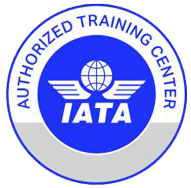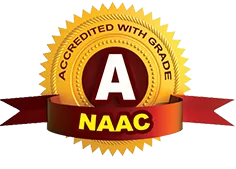Course Outcome
Course Outcome of BSc Geology
SEMESTER I
- The student will be able to discuss and explain about the origin and evolution of earth,
earth’s various layers and their properties.
- The student will be able to identify major geological events during the different
periods of earth history.
- The student will be able to apply the principles of Crystallography, Mineralogy & Petrology.
- The students will be able to explain how earth processes create hazards to life and
property.
SEMESTER II
- The student will be able to demonstrate the role of various geological agents and illustrate
the landscape evolution.
- The student will be able to explain the fundamentals of aerial photography, remote sensing, electromagnetic spectrum, resolution concepts, various sensors, and Indian remote sensing satellite missions.
- The student will be able to apply the remote sensing techniques in mineral exploration,
ground water exploration, land use/land cover mapping and geomorphology.
- The student should be able to explain the GIS Applications in urban planning, groundwater
studies, mineral exploration, disaster management, climate change analysis
SEMESTER III
- The student will be able to explain the basic laws of crystallography, application of X-ray crystallography and stereographic projection of crystals.
- The student will be able to describe the various crystal notations and derivation of the crystal classes with symmetry elements.
- The student will be able to describe the physical characters of important rock forming minerals.
- The student will be able to discuss the Earth mineralogy
SEMESTER IV
- The student will be able to distinguish the minerals based on their optical properties such as sign of elongation, order of interference colour and also on conoscopic observations.
- The student will be able to discuss the Earth mineralogy.
- The student will be able to describe the structure, chemistry, physical, optical characters of important rock forming minerals.
- The student can use the knowledge of mineralogy to understand Petrology.
- The student will be able to skilled in software such as ArcGIS.
- The student should be able to explain the working principles of Geogrpahic Information System.
- The student will be able to apply the theoretical knowledge in identification of mineral specimens based on physical properties.
- The student will be able to identify face, form, Axis, symmetry, system and laws of crystallography.
SEMESTER V
- The student will be able to demonstrate the geological mapping skills in any terrain.
- The student will be able to explain the relationship between various structural features and the processes responsible for their formation.
- The student will be able to describe tectonic evolution of Earth’s continental crust.
- The student will be able to explain the plate tectonic system in earth and geodynamic evolution of Indian plate.
- The student will be able to explain Stratigraphic principles and evolution, recent developments in stratigraphic classification and major geological events during the different periods of earth history.
- The student will be able to describe the geochemistry of weathering transportation and deposition.
- The student will be able to apply the information on textures and structures in order to understand about the origin of the rocks.
- The student will be able to describe sedimentary facies and depositional environments, Lithologies and structures formed in various environments, basin analysis, and the relationship between plate tectonics and sedimentation
- The student will be able to understand the generation of magma and formation of igneous rocks at different tectonic settings.
- The student will be able to illustrate the significance of Bowen’s reaction principle, textures and structures, phase rule and its applications in the study of igneous Rocks.
- The student will be able to describe the unary, binary, ternary and quaternary phase diagrams.
- The student will be able to describe the classification of igneous rocks under various schemes and also the petrography and petrogenesis of important igneous rock groups.
- This course provides a comprehensive knowledge in experimental metamorphic petrology, metamorphism in relation to space and time, and plate tectonics.
- The student will be able to discuss the equilibrium aspects of metamorphic reactions, phase diagrams and graphic representation of mineral assemblages, and experimental and thermodynamic appraisal of metamorphic reactions.
- The student s will be able to illustrate the petrogenetic significance of metamorphic textures and structures, progressive, contact and regional metamorphism of argillaceous, carbonate, basic igneous and ultramafic rocks.
SEMESTER VI
- The student will be able to illustrate vertebrate paleontology – succession of vertebrate life through geologic time the general characteristics and evolution histories.
- The student will be able to apply the principles of paleontology in various fields.
- The student will be able to differentiate characteristics features of each phylum.
- The course offers the introduction to the Geology of India, its divisions and relative and absolute criteria for divisions.
- Basic understanding of the geological activities in the Indian Geological history especially related to climate, lithology and mineral deposits.
- Students will be able to understand tectonic evolution of Indian subcontinent and their impact on various structural features.
- This course will help the students to understand the recent geological events such as recent crustal movement and glaciations.
- The student will be able to illustrate the important properties of ore minerals under the ore microscope.
- The student will be able to describe the various theories of ore genesis and association of rock types and ore minerals.
- The student will be able to explain the genetic classification of U and Th deposits, Strategic, critical and essential minerals of India, National Mineral Policy of India.
- The student will be able to understand various types of mineral deposits, its classification and Indian occurrence along with the origin of coal deposits, petroleum formations and distribution of these fossil fuels in India.
- The students will be able to explain common earth materials and their relationship to environmental hazards
- The students will be able describe the occurrence and formation of earth resources and significant environmental effects caused by their extraction, processing, and use.
- To describe the major sources of water, soil, and sediment pollution and methods for their management.
- The students will be able explain the causes and effects of global climate change.
- The student will be able to apply the principles of structural geology in problem solving and map interpretation.
- The student will be able to apply the theoretical knowledge in identification & interpretation of various ore minerals.
- The students will be able to apply the theoretical knowledge in identification, interpretation & origin of Igneous, Metamorphic & Sedimentary rocks.
- The students will be able to identify the Petrography of Igneous, Metamorphic & Sedimentary rocks. Textures and structures of igneous and
metamorphic rocks and their genetic significance with neat sketches.
- The students will be able to apply the theoretical knowledge in identification, interpretation & geological age of plant and animal fossils.
- The students will be able to design and implement a research project
- The students will be able to identify and enumerate the scope and limitations of a research project
- The students will be able to understand the scientific methods of research project.
- The student will become well efficient in field geology.
- The student will be able to apply the theoretical knowledge in the extensive field work with emphasis on Stratigraphy, Structural Geology, Economic Geology, Palaeontology, mineralogy and Petrology.







